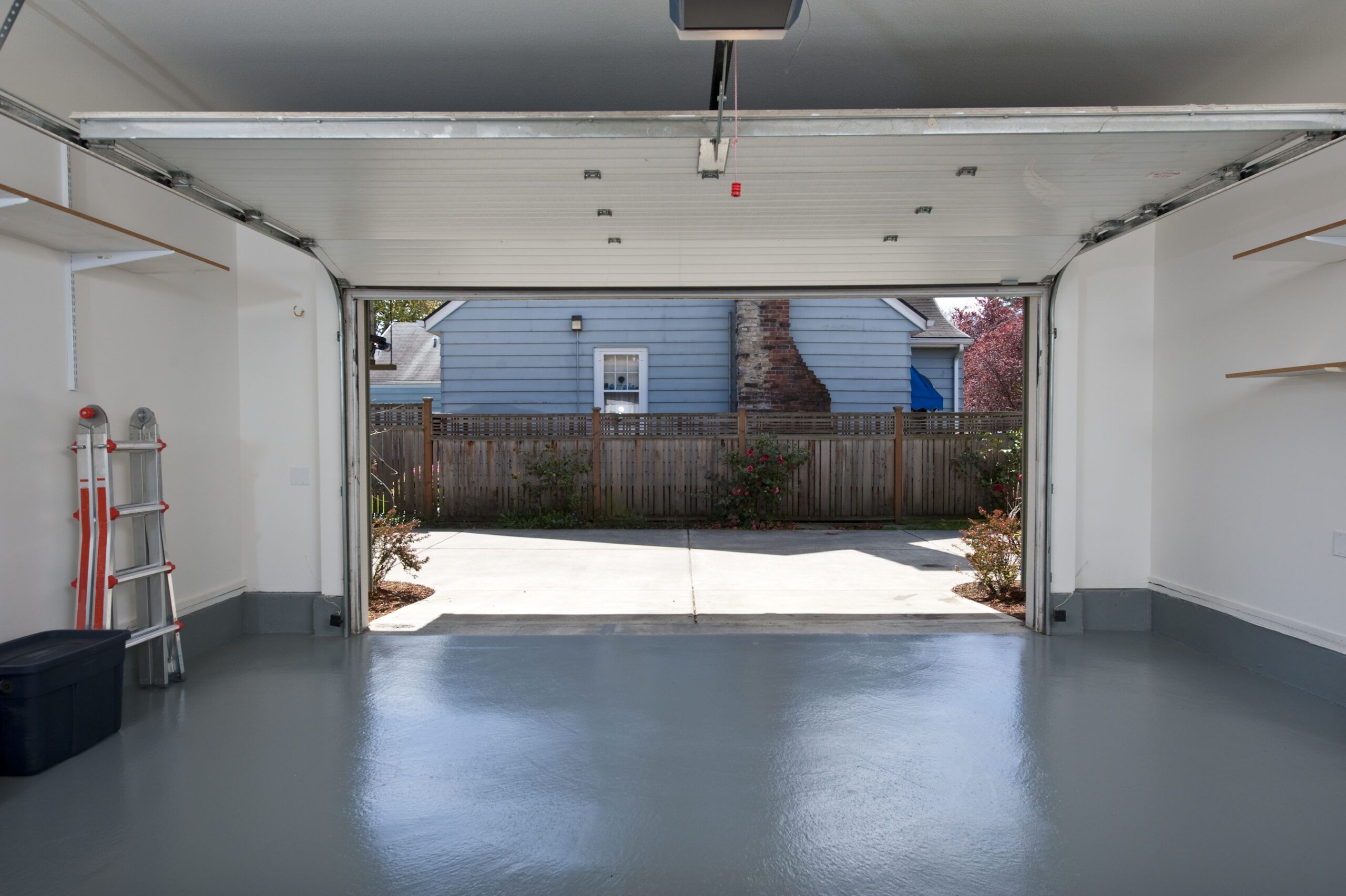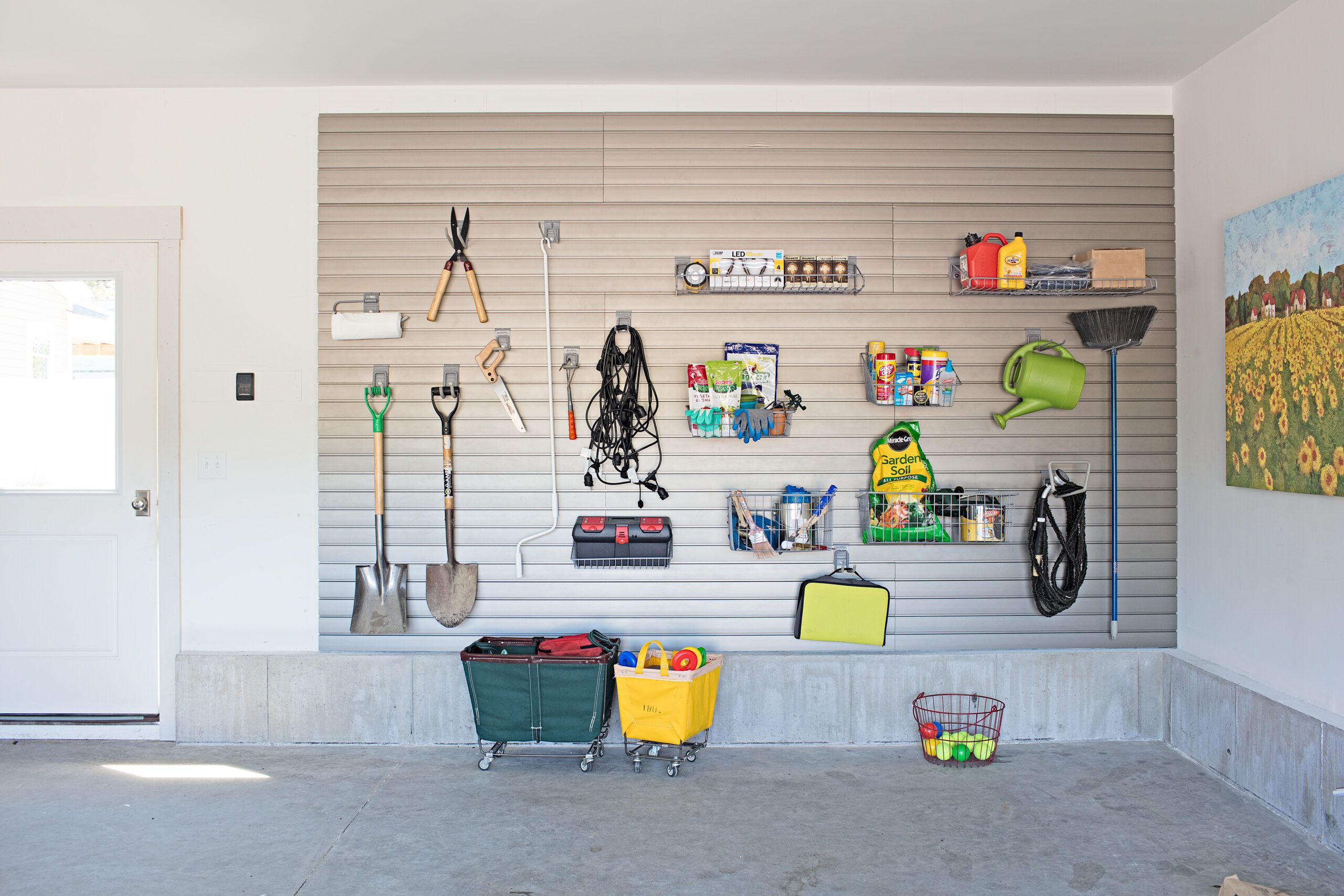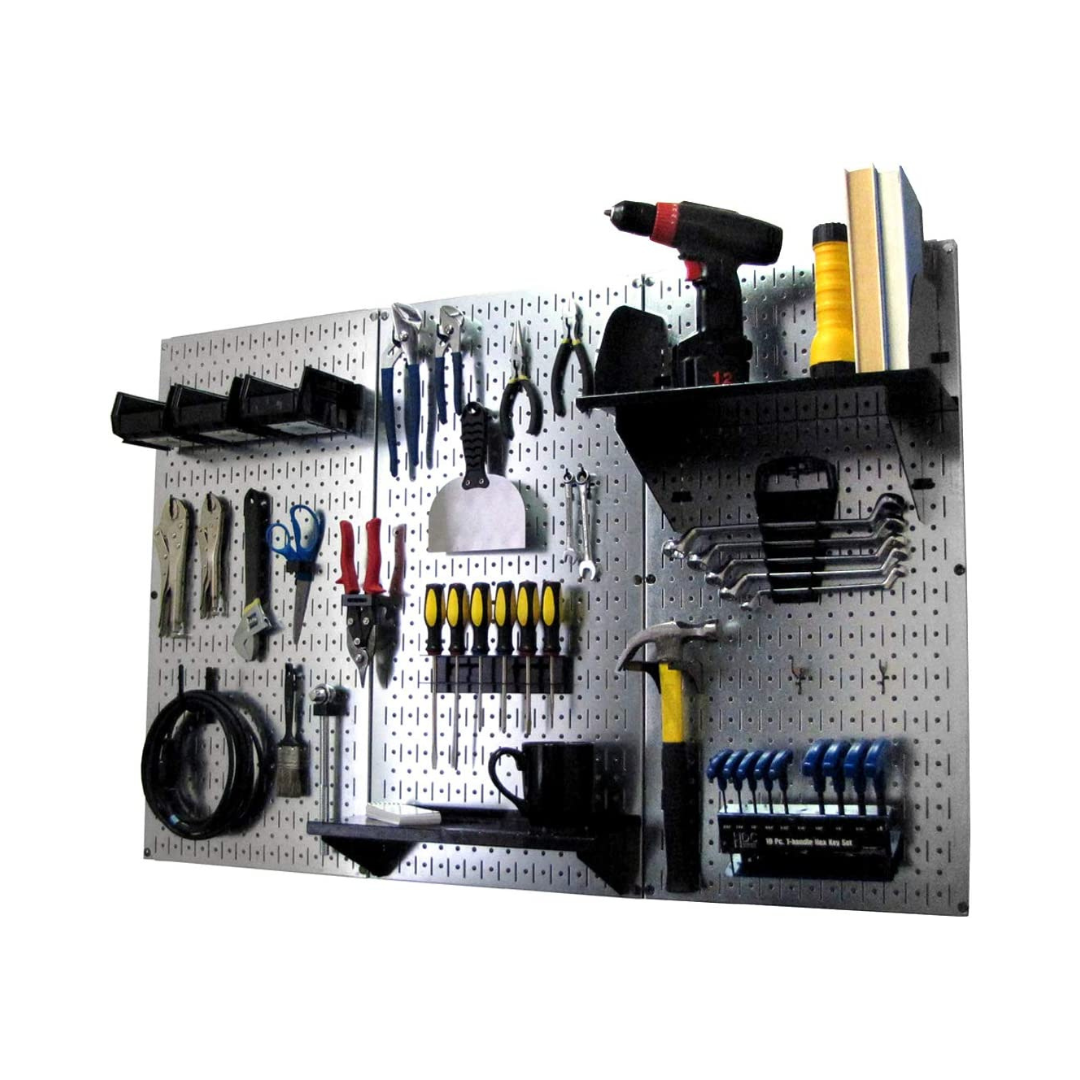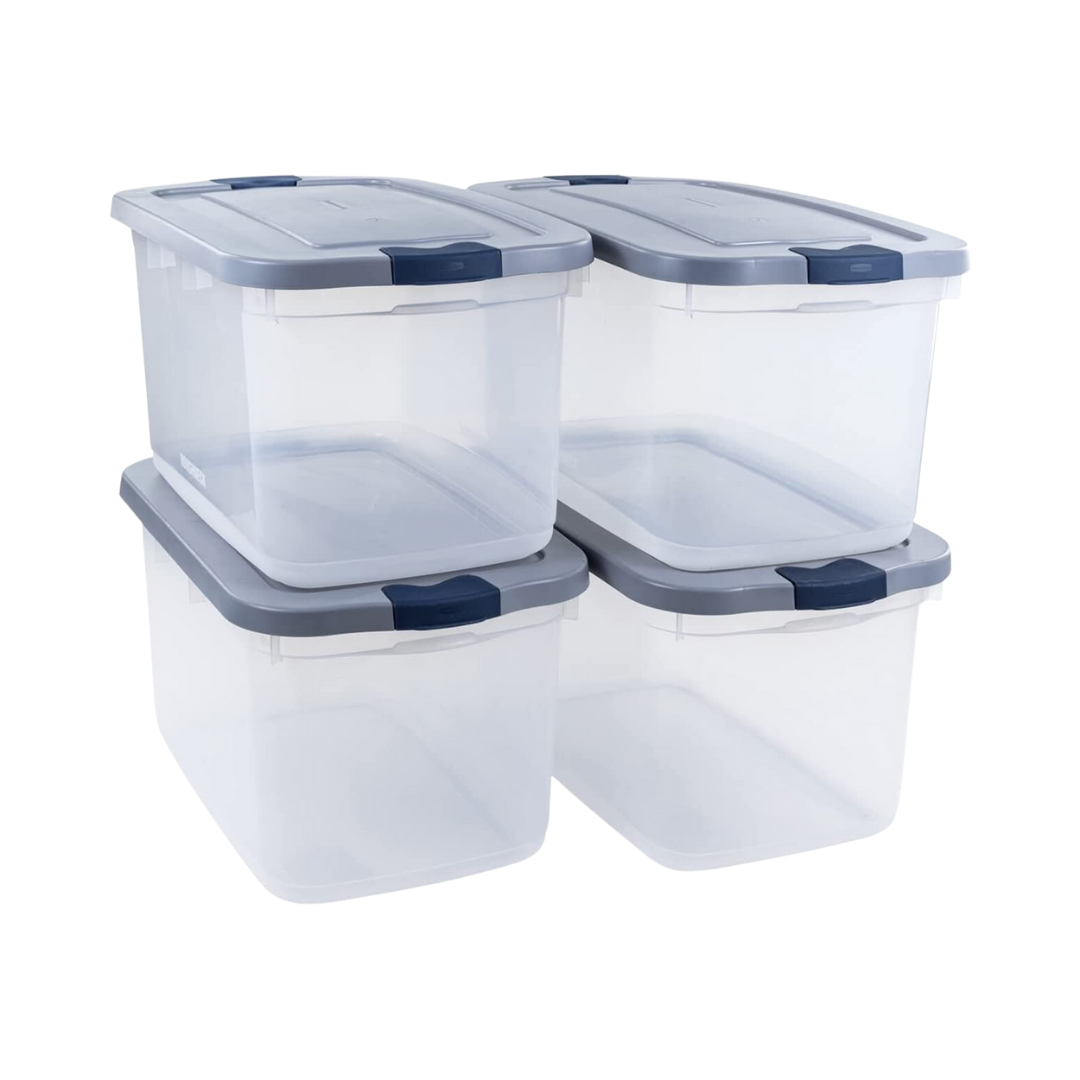Organizing your garage will help you free up space and create a safer environment. After you organize, it will be easier to navigate your garage, helping you save time when you’re on the search for something. Cleaning and organizing your garage will be necessary if you’re planning on eventually converting your garage.
In this article, we’ll give you tips on how to organize your garage and provide you with instructions to clear out your clutter and keep your garage safe and clean.
How To Clean out Your Garage
Before you start organizing your garage, you have to clean it out. Trying to organize around clutter won’t be very effective. It may feel like a daunting task, but you can clean out your garage with ease using the tips we’ve complied below:
- Set aside enough time to clean out the space. It could take you a full day or several days to get the job done, so make sure you’ve blocked out your calendar.
- Take inventory of your items. Knowing what you have will help you manage your budget and keep track of your belongings and where to find them.
- Sort all items into three piles—keep, donate or sell, and toss. Place keep and donate items on dedicated tarps and toss items that are expired or broken beyond repair.
- Take your donation pile to a local charity or contact a pickup service soon after you’ve determined which items are in good enough condition to give away.
5 Things You Should Never Store in Your Garage
Another part of decluttering your garage includes eliminating things that don’t belong in there. For safety reasons, don’t store these items your garage:
- Paint: Extreme cold or heat can ruin paint, so store cans in a more temperate area
- Propane: A spark could ignite the fumes—propane tanks should always be kept outdoors
- Paper goods: These are a magnet for roaches and other bugs and should be kept in your pantry
- Refrigerator: Refrigerators are a huge energy drain in spaces that are not air-conditioned
- Pet food: Keep pet food in a sealed container inside since opossums and other animals can sniff it out and get in
Garage Safety Tips
As you clean your garage, follow the tips below to ensure the space is safe:
- Avoid carbon monoxide exposure. Keep gas-powered equipment, such as a lawnmower or car, turned off inside your garage and consider installing a carbon monoxide detector.
- Inspect garage doors and your garage door opener. Check cable wires and springs for excessive wear and test the auto-stop feature on your opener monthly.
- Lock up hazardous materials so that they remain out of reach from children.
- Store power tools safely.
- Follow proper fire safety precautions and mount a fire extinguisher on your wall. It should carry an ABC rating, certifying that it’s effective against wood, oil, and electrical fires.
19 Tips To Organize Your Garage
1. Draft a Floor Plan of Your Garage
Before buying any sort of garage-organizing system, take down your garage’s dimensions and note the size and location of windows, doors, switches, and receptacles, as well as how much garage space your car takes up. Then use the following rules of thumb as you assign things a home.
- Items you use together, such as garden hoses, rakes, other gardening tools, and lawn chemicals, should be stored close to one another.
- Put bulky equipment, such as lawnmowers, in corners, where they won’t get bumped or knocked over by your car.
- Place frequently used items, such as bikes, close to the garage door.
- Stash seasonal items or rarely used items in the hardest-to-reach spots.
2. Keep Things Off the Garage Floor
Keep items off the floor whenever possible. You’ll free up much more room for your car and avoid sloppy, impossible-to-sort-through piles. Ready-made shelving units or cabinets that allow you to clean the floor beneath them are good storage solutions. Most manufacturers of garage-organizing systems offer free space planning, so use their services as you research how to store all your gear.
3. Store Your Belongs in Cabinets
Storing your belongings in cabinets ensures an organized space. A lockable cabinet allows you to store lawn chemicals and other stuff you don’t want your kids to get into. However, cabinets with doors make it easier to hide a mess, so use them sparingly as you try to keep your garage organized.
The video below will walk you through how to install a storage system for items you want to protect from airborne dust and dirt.
4. Use Open Shelves To Store Items
Shelves are inexpensive and easy to access—they also let you scan what you’ve stored. Some products that are ideal for garage shelf storage include:
- Clear jars in different sizes for sorting hardware and small items. You can save food jars and clean them out thoroughly before using
- A portable label maker will help you keep your belongings clearly labeled.
- Stackable, clear plastic bins with lids protect your items while allowing you to see what’s inside them.
5. Install Vertical Space Organizing Systems
A vertical storage system allows you to store items without taking floorspace. Below are three examples of vertical organizing systems:
- Pros: Widely available and easy to install, pegboards can be cut to size and even painted to customize the look. Several manufacturers make a wide variety of compatible hooks, shelves, and organizers.
- Cons: While pegboard can handle lightweight hand tools and other goods, it isn’t sturdy enough for hanging heavy-duty objects like bicycles.
Track-based systems:
- Pros: Shelf standards hang from a single track affixed to wall studs, so these systems can bear the weight of heavier objects. Standards, hooks, shelves, and organizers can be relocated easily, and you can find them in stores or online.
- Cons: You must make sure the track is level so that the standards hang straight. They’re best for garage walls that are finished and plumb.

- Pros: The entire wall is finished with slotted plastic panels that hold lock-in hooks, shelves, and storage cabinets so that every square inch of wall space can be put to use.
- Cons: Some systems must be installed by trained professionals, adding to the cost, and you’re limited to system-compatible organizing products.
6. Use Overhead Storage Space Wisely
The garage ceiling is a great spot for hanging long, flat items you don’t use every day, such as ladders and seasonal sports gear. Make sure that any shelves you hang from the ceiling don’t interfere with your garage door’s operation and that there is enough clearance to avoid scraping the roof of your car.
7. Build a Workbench
For homeowners who take on a lot of do-it-yourself (DIY) projects, a workbench has several benefits. It’s tall enough that you can stand upright, providing ergonomic support. They often have shelving underneath so you can store equipment, and they support the weight of your tools, materials, and machinery. Below are a few tips when creating the right workbench for your space:
- For the occasional DIYer, a wall-mount fold-down model offers a sturdy surface and tucks out of the way when not in use.
- Benches that have built-in tool drawers can be pricey. Instead, flank a simple worktable with shelves and add pegboard above to hold your gear.
- A set of casters turns any table into a mobile workstation, but make sure they don’t create an uncomfortably tall table.
- Finish it off with a padded stool that fits under the table for safekeeping.
8. Stop Air Leaks Between the Garage and House
Before installing organizers, check for gaps in the wall your garage shares with your house and in the ceiling, if there’s a room above the garage. These are the spots where hot or cold air and the moisture it carries will seep inside. Seal small gaps with caulk and larger ones with expandable spray foam.
9. Invest in Door and Window Locks
Break-ins can happen when the garage door is left open and the door to the house is unlocked. Always secure the entry door with a deadbolt and keep garage windows locked.
Put in a garage-door lock that bolts the door to the sidewalls, and use it when you’re away for an extended period. And always close the garage door—even if you’re just mowing the backyard lawn.
10. Use an Epoxy Floor Coating
A dingy concrete floor could look even more drab once you’ve tidied up. An anti-skid floor coating resists oil stains and wipes clean as easily as a kitchen countertop—and the coating can disguise any imperfections.

Upgrading your garage floor with an epoxy coat is a simple DIY project. Pick up an all-inclusive kit and plan to tackle the project when you’ll have a few days of temperate, 50- to 80-degree weather for adequate drying time. The key to success is diligent prep work—namely a clean, dry slab.
11. Seal The Threshold
Rain, windblown leaves, bugs, and mice will find their way inside if the bottom of your garage door doesn’t sit flush with the floor. Create a snug fit by attaching a rubberized strip to the floor where the door lands, and you’ll save yourself some cleanup time.
12. Upgrade Lighting and Electrical Systems
For ambient light, opt for 4-foot fluorescent fixtures with electronic ballasts, which give flicker-free light and work well in cold temps. Space them 4 feet apart and use as many as you need to see well at night. Swap in receptacles with ground-fault circuit interrupters (GFCIs) that cut the power when there’s a short in the system.
13. Making Pulling Into the Garage Easy
Here’s how to make sure that your cars will always be a good fit:
- Skip the motion sensors that tell you exactly how far to pull the car in—just hang a tennis ball on a string from the ceiling so that it taps the windshield when you’re in the right spot. Ideally, you should be able to walk between the garage’s back wall and your car.
- Protect your car’s finish by attaching pieces of scrap carpeting to the walls in spots where the doors or bumper might hit them.
- Leave the center aisle between two vehicles as wide as possible so that you can roll trash bins to the curb or move bulky objects around without interference.
- If you have a minivan, back it into the garage with the sliding doors facing the center, then park your sedan next to it facing forward to allow easy access to both vehicles.
14. Add Magnetic Strips for Work Tools
If you have more tools than can fit on your pegboard, or if you simply want to be able to easily access your most-used tools, consider adding magnetic strips in front of your workbench. These strips are great places to store items like wrenches, screwdrivers, chisels, scissors, and hammers.
15. Utilize Leftover PVC
If you have extra PVC piping, you can use it to store items in your garage. Strategically-attached PVC pipes can be used to store garden tools, brooms, rakes, and cordless power tools.
16. Use Retractable Cord Reels
Retractable cord reels are a smart hack you can use to avoid having bulky extension cords running throughout your garage, which minimizes your overall usable space.
17. Take Advantage of Corners
If the majority of your wall space is being used for pegboards, cabinets, or other tool storage products, look to the corners to store small items. Corner shelves are an excellent place to store small tools, tape, glue, and other small items.
18. Hook Your Power Tools for Easy Access
If you’re a DIYer who needs quick and easy access to your most-used power tools, consider installing a tool hook, which provides a convenient spot to hold items like leaf blowers and cultivators. It can hold as much as 50 pounds and can be easily slotted onto an existing organizational strip or shelf in your garage.
19. Keep It Clean for Good
Here are some of our top organization tips for ensuring your garage stays organized all year round:
- In spring and summer, keep insects at bay with a natural pesticide.
- Keep a bag of kitty litter handy for absorbing oil and grease spills. Place a broom and dustpan or a handheld vacuum near your workbench to tidy up after working on projects.
- Hose down the floor regularly.
- At least once a year, weed through your belongings and sell, donate, or toss what you don’t need.
Organization Products We Love
These are some of the most useful tools to have on hand when it comes time to organize your garage.
Our Conclusion
Organizing your garage makes it easier for you to locate your belongings and keeps the space safer for you and your family. Start by cleaning and decluttering your garage, donating or tossing items you no longer want or need. Once the area is cleaned out, consider drafting a floor plan and storing belongings in clear bins and on open shelves. Remember to take proper safety precautions, such as mounting a fire extinguisher on the wall and locking away hazardous materials.
FAQ About How To Organize Your Garage
Should you store clothing in the garage?
Storing clothing in your garage, even in storage bins, is not recommended. Soft items like clothes can be an invitation for animals, such as skunks and raccoons, to cozy up in. Keep clothes and bedding in bins inside of your home and leave the garage for harder items.
Can you store canned food in a garage?
Canned food stored in a garage will have a shorter shelf life because it is not stored at the proper temperature. If the garage gets too hot, the food could spoil, and if it gets too cold, the food will freeze, which will diminish its quality even after it’s thawed out.
Does organizing your garage make it easier to clean?
Yes, organizing your garage will make it easier to clean. Not only will you reduce clutter and have more floor space, but you’ll also be able to better use your cleaning supplies and have easier access to items that need to be cleaned or dusted.




